See details
READ MORERecovery protocol after Latarjet intervention of shoulder instability
Recovery after the restoration of shoulder instability by the Latarjet procedure is not easy. The patient needs to understand that sometimes the recovery process is very difficult and can take a very long time. The patient must be very compliant with the treatment, patient and confident in the success of the treatment. He must perform daily recovery exercises to regain muscle strength and normal degrees of mobility. The complete recovery period cannot be anticipated and varies quite a lot. It normally lasts between 4 and 6 months, but sometimes it can last up to 12 months. Office work can be resumed 1 week after the operation, and physical work is allowed after 6 months. The recovery period depends on the success of the surgery.At the end of the surgery, the patient is transferred from the operating room to the intensive care unit where he stays for a few hours. The operated pelvic limb is immobilized in a sling (special bandage), which the patient will wear continuously for 14 days, except when washing, dressing, and exercising. It is recommended that the patient sleep with the immobilization and use it after 2 weeks if he goes through congestion. The purpose of using this immobilization is to protect the suture or reinsertion of the joint capsule. After such an intervention in the next period, the patient will receive analgesics (pain medications), even if the literature describes bearable pain.
Cryotherapy is used postoperatively to reduce pain, local edema, muscle spasms and to reduce the inflammatory response. Ice is used in rounds of 20-30 minutes in the first 4-5 days postoperatively.
After 2-3 days of hospitalization, the patient is discharged, going to see a doctor every 3 days until 14 days when the wires are removed. The patient will continue at home to take the medication prescribed by the doctor: antibiotics and pain medications. It will continue with cryotherapy.
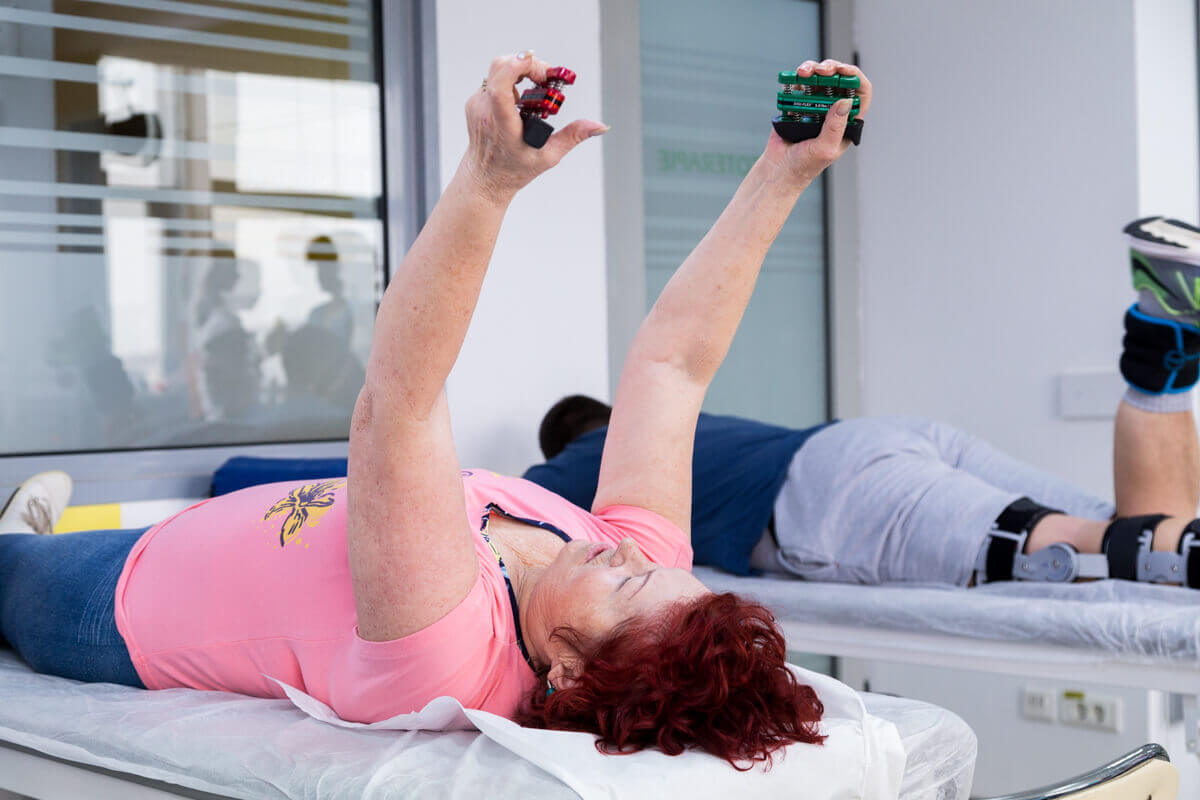
Phase I: Immediately postoperative phase (first 5-7 days after surgery, before starting physical therapy)
Objectives:
- Protecting the bone pill and allocating time for fixation (usually lasts between 6-8 weeks)
- Ensuring wound healing
- Reduction of pain and inflammation
- Preventing stiffness and regaining mobility
Activities:
- Orthosis: Wear the orthosis at all times, except during recovery. Remove the orthosis 4-5 times a day to perform the pendulum exercises. You will have to sleep with an orthosis. It is usually more comfortable to sleep in an armchair with a folding back or on several pillows.
- Using the affected arm: Do not move the elbow and shoulder away from the body. Elbow flexion and extension are allowed. Continue the movement of the elbow joint and the hand to facilitate movement and mobility. Also:
- No lifting objects
- No excessive shoulder extensions
- No excessive stretches of sudden movements Without supporting the weight of the body in the hands
- Continue regular application of ice. At least 20 minutes per application, 4-5 times a day.
- The first appointment for recovery should be 5-7 days postoperatively.
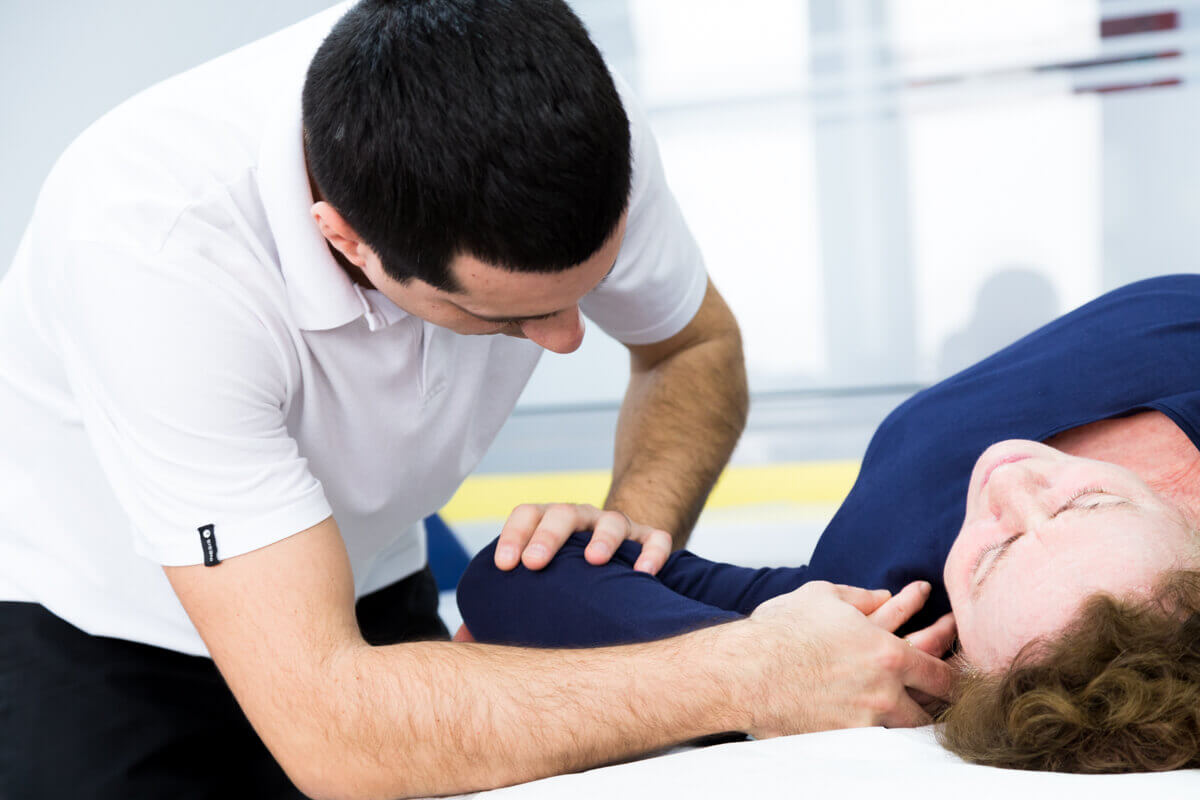
Exercises:
Schedule: 7 days / week, 4-5 times a day| Pendulum exercises | 1-2 sets | 20 - 30 repetitions |
| External rotation with the arm in supination | 1-2 sets | 10 - 15 repetitions |
| Passive rotation of the arm in supination | 1-2 sets | 5 -10 repetitions |
| Scapular retraction | 1-2 sets | 5 - 10 repetitions |
| Shoulder lift | 1-2 sets | 10 - 15 repetitions |
Pendulum exercise
Remove the orthosis, bend at the waist and let the arm hang down. Using your body to initiate the movement, gently rock your arm back and forth in a circular motion.Passive lifting to the front in supination
Sit on your back. Hold the affected arm at the elbow with the opposite hand. Using the opposite hand, lift the operated arm, mimicking the lifting movement of the arm above the head. Then slowly place your arm back on the bed.External rotation in supination
Lying on your back, keep the elbow of the operated arm on your side, at a 90-degree angle. Using a long stick or stick with the opposite hand, push the operated arm into your hand so that the operated arm rotates outward.Shoulder strain
Standing, tense the shoulder blades back and forth.Phase II: Intermediate postoperative phase (5-7 days postoperatively - 2 weeks)
At this point, you should start physical therapy; the following instructions are to help your physiotherapist maximize the results of the operation but also to protect it. The physical therapist will show you the correct execution of the exercises below and will establish a program for your home. It is important to stay within the imposed limits and to perform the exercises daily. You should perform the program at home at least 3-4 times a day, every day. The success of the operation depends on your recovery.
*** Physical therapy should not be painful. Do not force painful movements ***
Objectives:
- Operation protection
- Ensuring wound healing
- Prevention of shoulder stiffness
- Pain and edema control.
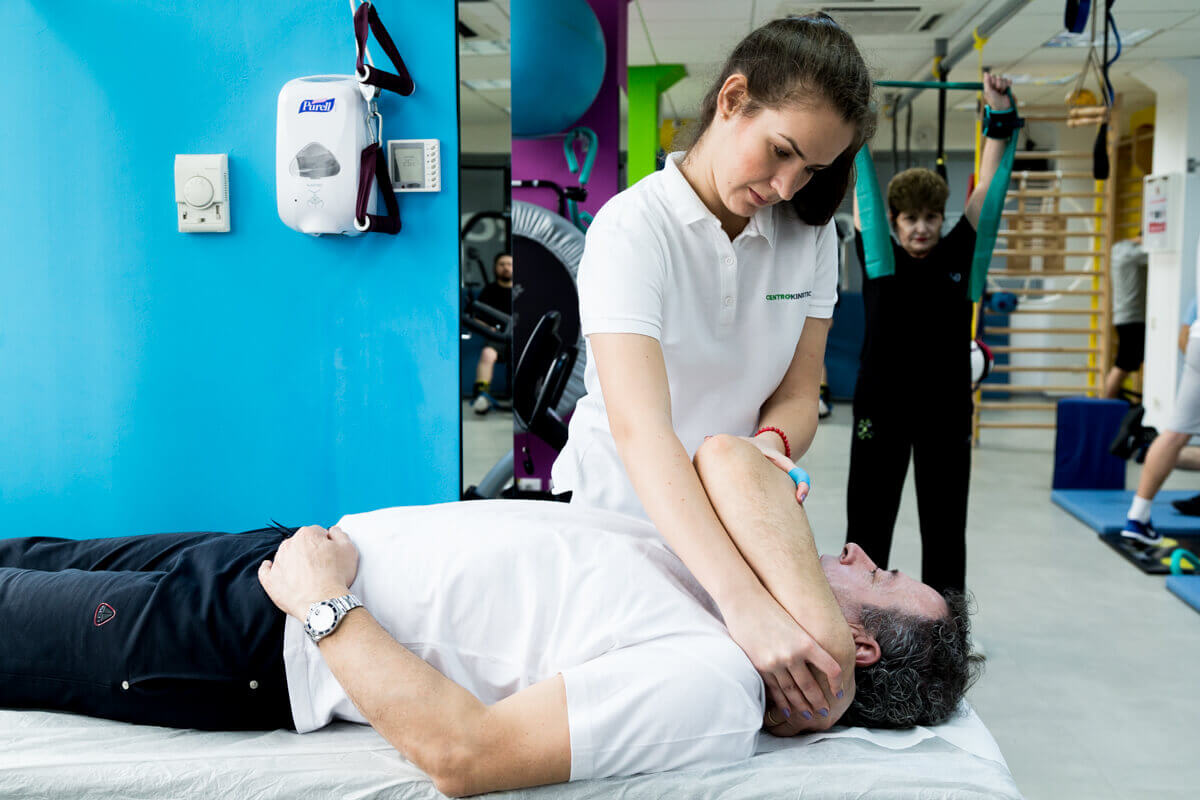
Activities:
- Orthosis: Wear the orthosis almost all the time for 4 weeks. Your doctor will give you adjacent instructions for using it at the postoperative visit. Remove the orthosis 4-5 times a day to perform the pendulum exercises. For the first 4 weeks, you will have to sleep wearing an orthosis.
- Using the operated arm: You can use the hand of the operated arm for movements before the body plane but DO NOT raise the arm to head level. Avoid moving your arms behind your head. Bending the elbow is allowed, but lifting objects over 1 kg or engaging in activities that include forcing the forearm, such as using a screwdriver, is not allowed. Using a computer or writing is allowed as long as they are not painful.
- Taking a shower: You can shower or bathe and wash the incision area. To wash under the operated arm, bend at the waist and let the arm fall passively next to the body. It is safe to wash under your arm in this position. This position is the same as the one used to perform the pendulum exercise.
- Continue to apply ice regularly.
- You will have your first medical visit after the first 2 weeks postoperatively.
Exercises: (focus on stretches and passive movements)
- External rotation in supination (external rotation limited to 0 degrees)
- Frontal elevation in supination
- Ball tightening exercise (squeeze the ball in your palms for 5-7 seconds)
- Scapular retraction
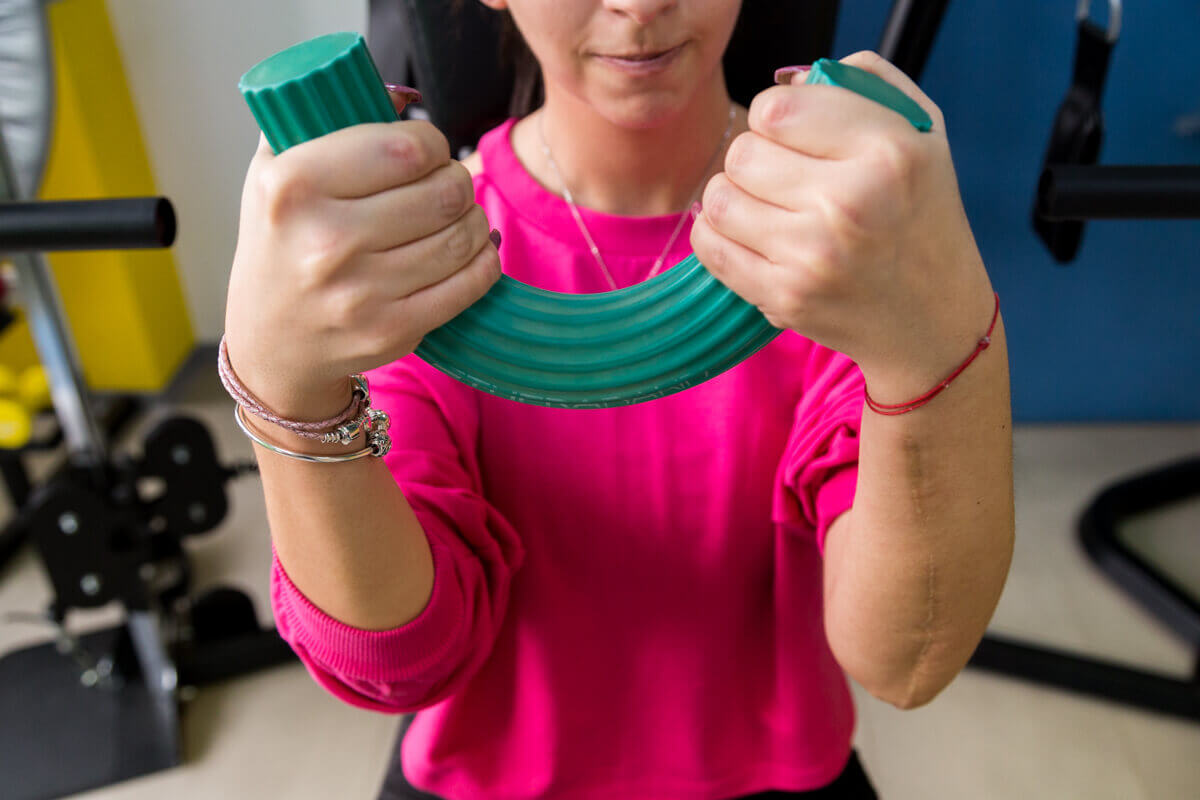
Phase III: movement initiation phase (weeks 2-5)
Objectives:
- Operation protection
- Ensuring wound healing
- Prevention of shoulder stiffness
Activities:
- Continue wearing the orthosis. At home, you can remove it whenever you want, if you take care and protect your shoulder. Use the orthosis every time you leave the house. Wear the orthosis overnight for 3-4 weeks.
- Use of the operated arm: It is permitted to use the hand of the operated arm as long as you do not perform external rotational movements or remove it from the body. Bend your arm at the elbow and use your fingers or hand to touch your face. Keep your elbow in front of you.
- Taking a shower: You can bathe / shower and wash the incision area. To wash under the operated arm, bend from the cut and let the arm hang passively next to the body. It is safe to wash the area in this position. It is the same position as in the pendulum exercise. Do not immerse the incision underwater.
- Continue to apply ice regularly.
- Once you have finished the painkiller treatment and you can move your arms to the front, you can drive again.
Exercises:
Passive stretching / mobilization
- Pendulum exercises
- External rotation in supination (limited to 30 degrees)
- Passive lifting with the hand in supination
- Internal rotation to the back (after 3 weeks postoperatively)
Isometry:
- In the neutral position, perform internal and external rotational movements
- Lying on the floor, face down, paddle
- Lying on the floor, face down, do not exceed the level of the hip.
- Positioned to one side, perform external rotational movements
- Under the supervision of the physical therapist, perform rhythmic stabilization exercises and proprioceptive exercises.
Phase IV: active movement phase (5-8 weeks after surgery)
Objectives:
- Surgery protection
- Regaining the full scope of the movement
- Start of strengthening exercises
Activities:
- The orthosis is no longer needed
- You can now use the arm. Avoid situations where the arm is pushed back.
- Continue to avoid lifting heavy objects or manual labor. Follow all instructions given to you by your doctor.
- Do not lift objects above the level of the head and towards the back of the head. In other words, keep the objects in front of you so that you can see them.
- Continue to apply ice regularly.
- At 6 weeks postoperatively, perform a medical examination.
Exercises:
Passive stretching / mobilization
- Passive stretching / mobilization
- Pendulum exercises
- External rotations in supination (limited to 45 degrees)
- External rotations stand in vertical position (limited to 45 degrees)
- Passive lifting of the arm in supination
- Shoulder flexion sitting on a chair
- Internal rotations towards the back of the body.
Reinforcement / Theraband::
- External rotations
- Internal rotations
- Lying on the floor, face down, make rowing movements
- Horizontal T-abductions standing on the floor, face down
- Extensions stand in a horizontal position, facing downwards
- Standing upright, perform abduction movements
- External rotations stand on one side
- With the help of the physical therapist, perform proprioceptive and rhythmic stabilization exercises.
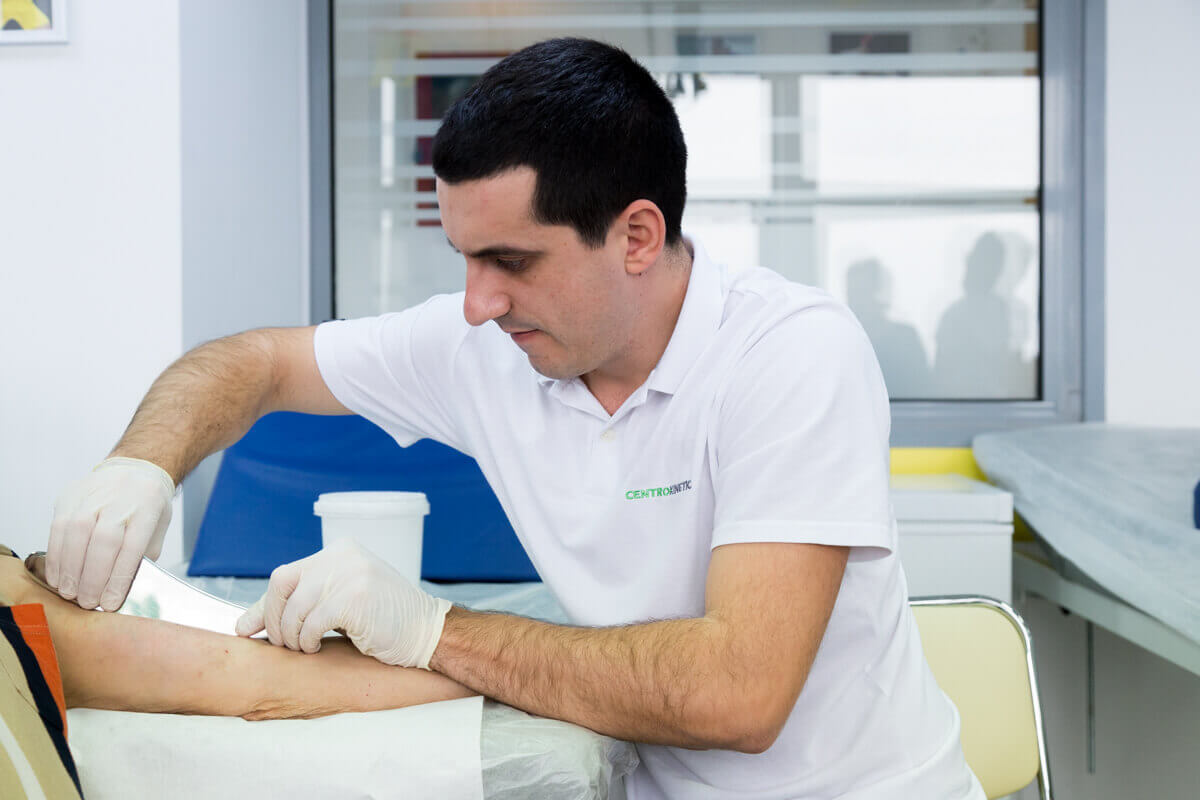
Phase V: strenghtening phase (8-12 weeks after surgery)
Objectives:
- Operation protection
- Complete recovery of the scope of the movement
- Gentle continuation of strengthening
Activities:
- You can now use the arm normally. You can move it in all directions, including external rotation and to the back of the body. Continue to avoid lifting weights or manual labor. Follow the instructions recommended by your doctor.
- Do not lift weights above the head and behind the body.
Exercises:
Passive stretching / mobilization
- Passive stretching / mobilization
- Pendulum exercises
- External rotations in a standing position / supported on a door / on a wall
- Stretching with your hands behind your head (starting at week 9)
- Internal rotations bringing the hands behind the back
- Stretching your arms supine by crossing your body (raise your elbow to 90 degrees, then point it at the opposite shoulder)
- Internal rotations on one side
Stretch / Theraband:
- External rotations
- Internal rotations
- In an upright position, mimicking the movement of a punch
- Shrugging
- Dynamic hugs
- "W" movements on the wall
- Standing on a chair, make paddling movements
Reinforcement / Dynamic:
- External rotations stand on one side
- "T" abductions in a horizontal position, face down
- Abductions in "Y" face down
- Rowing movements, lying on your back
- Extensions, lying on the back
- Abductions in an upright position, full movements
- With the help of the physical therapist, perform proprioceptive exercises and rhythmic stabilization
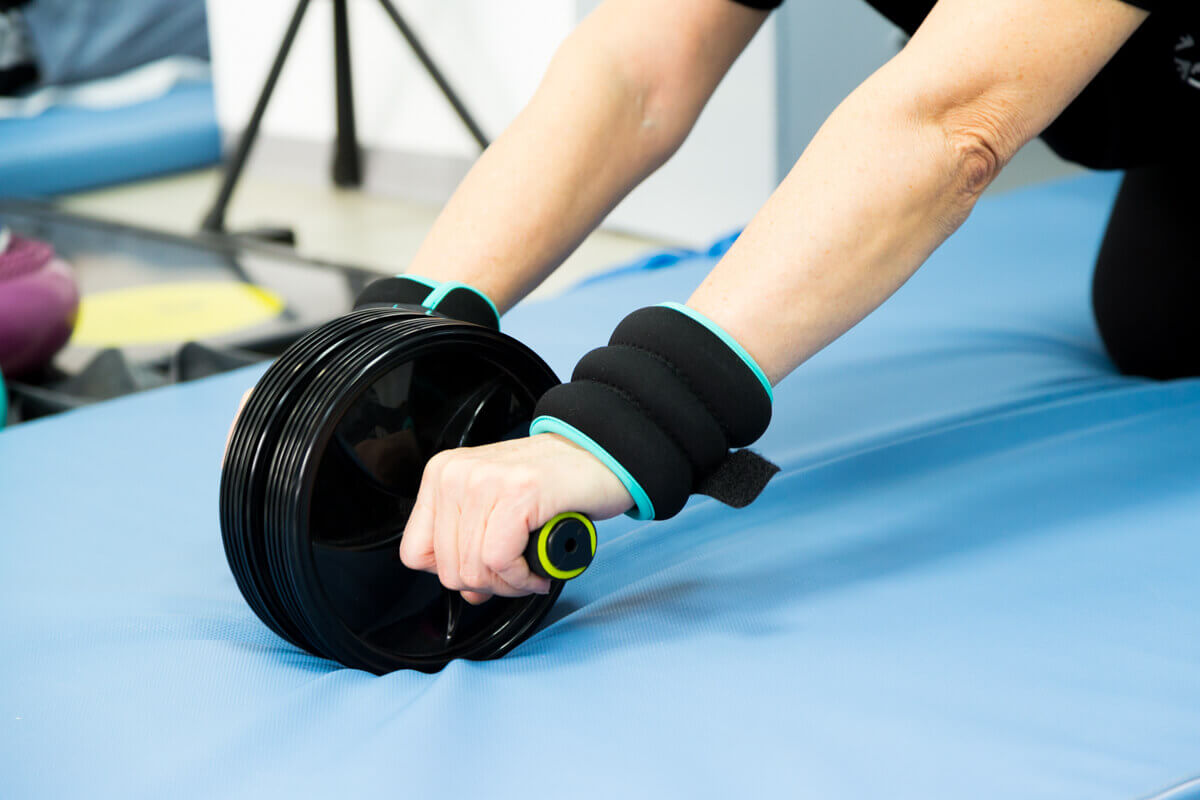
Phase VI: Advanced strengthening phase (weeks 12 and after)
Objectives:
- Operation protection
- Complete recovery of the scope of the movement
- Continuation of strengthening
- Gradual return to full activity
Activities:
- Use your arm for daily activities. There are no restrictions on the extent of the movement, except for those discussed with your doctor.
- Weight training can be summarized gradually, with caution on the following exercises: press, tilt press, barbell exercises, pulling weights behind the neck, and other exercises in which the hands are brought back.
- If you return to sports, it is recommended to wait 6 months after surgery.
Exercises:
Passive stretching / mobilization
- Continue phase V of the exercises
- External rotation in abduction at 90 degrees
Reinforcement / Theraband:
- Continue phase V of the exercises
- External rotations in abduction in "U" at 90 degrees inclined
- Weight biceps exercises
- Pronation/supination against resistance
- Flexion/extension of the fist against resistance
Progress:
It is allowed to start plyometric training with the consent of the physical therapist.It is allowed to start weight training but the following exercises should be avoided:
- Pulling weights behind the neck
- Shoulder press
- Lateral elevations of the deltoid, standing in a vertical position
- Triceps press
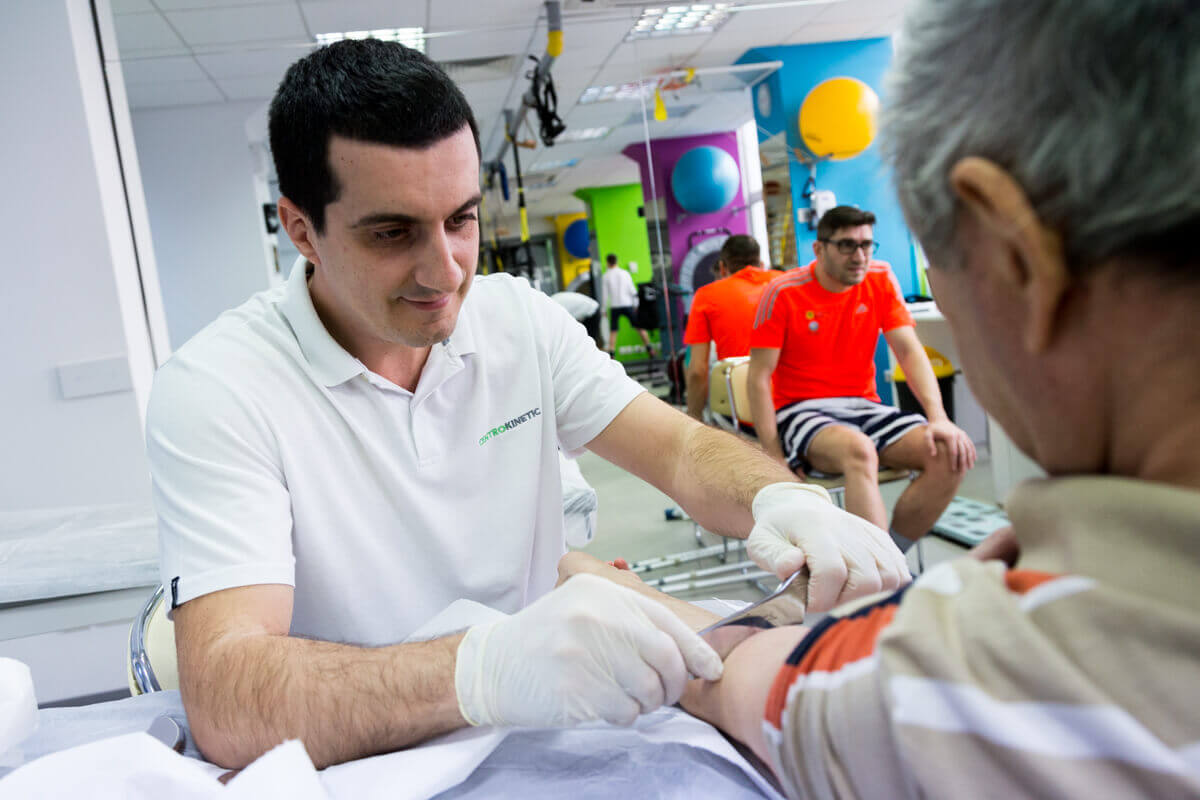
In week 16 you're allowed to practice the following sports: swimming, tennis, golf, throwing.
NB: All progressions are approximations and should only be used as guidance. Progression will be based on the individual condition of the patient, which is assessed throughout the treatment process.
SUCCESSFUL RECOVERY STORIES

MAKE AN APPOINTMENT
CONTACT US
MAKE AN APPOINTMENT
FOR AN EXAMINATION
See here how you can make an appointment and the location of our clinics.
MAKE AN APPOINTMENT




































































































































